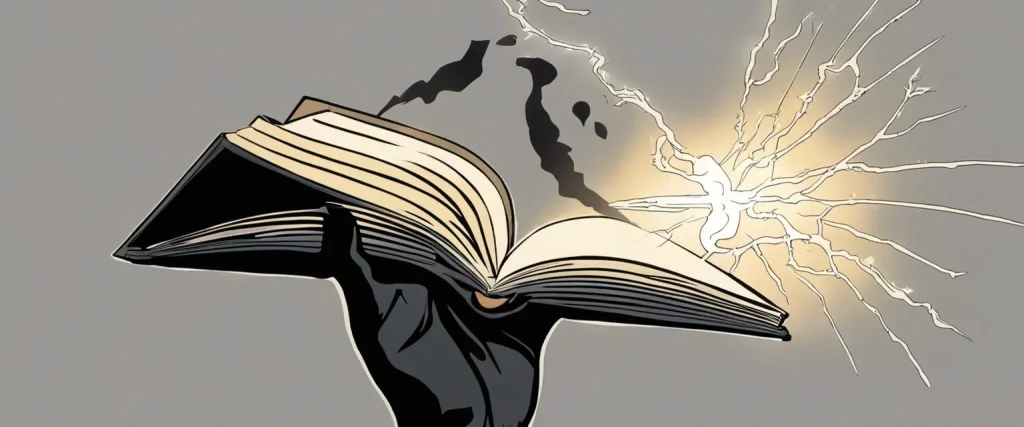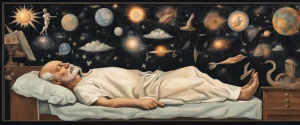In “A Short History of Nearly Everything,” renowned author Bill Bryson takes readers on an extraordinary journey through time, exploring the captivating story of how we came to know what we know about the world we inhabit. Bryson, an acclaimed travel writer and captivating storyteller, ventures beyond his usual terrain to delve into the realms of science, unraveling the complex and fascinating history of scientific discovery. With his unique blend of wit, curiosity, and meticulous research, Bryson delivers a captivating account that will leave readers marveling at the wonders of our universe and the remarkable individuals who have shaped our understanding of it.
Chapter 1: Introduction to the Universe
In the introduction to his book A Short History of Nearly Everything, author Bill Bryson begins by stating that the universe is an extraordinary and complex place. He discusses how the vastness of the universe is difficult to comprehend, with billions of galaxies, each containing billions of stars. Moreover, Bryson highlights how the scale of the universe is constantly expanding, leading scientists to believe that the universe originated from a single point in a Big Bang event.
Bryson points out that humans have only discovered a fraction of the universe’s mysteries and ponders upon the questions that still baffle scientists. He emphasizes the importance of curiosity and mankind’s desire to understand the workings of the universe.
Furthermore, the author delves into the history of early astronomers and how their observations and theories changed humanity’s perspective on the universe. He introduces some notable figures such as Galileo Galilei and Isaac Newton, who were instrumental in expanding our knowledge of the universe. Bryson also mentions the contributions of various ancient civilizations, such as the Greeks and the Mayans, in conceptualizing the cosmos.
However, despite the progress humanity has made in exploring the universe, Bryson highlights how much we still do not know. He discusses dark matter and dark energy, which together make up about 95% of the universe, yet remain mysterious and elusive. The author’s main point is that even though our understanding of the universe has grown exponentially, the universe and its intricacies are still largely beyond our comprehension.
In conclusion, Chapter 1 sets the stage for the book, introducing readers to the wonders and complexities of the universe. It encourages readers to think critically, appreciate the significance of scientific advancements, and embrace the eternal quest for knowledge about the universe.
Chapter 2: The Size of the Earth
Chapter 2: The Size of the Earth delves into the quest to accurately determine the circumference of our planet and the various endeavors that have been made in history to achieve this measurement. Bill Bryson provides a historical overview of the captivating and often arduous journey of scientists and adventurers who sought to uncover Earth’s true dimensions.
The chapter starts by recounting the Ancient Greeks’ first attempts to measure the Earth, carried out by mathematician and philosopher Eratosthenes. By calculating the angle of sunlight in two distant cities and comparing the distance between them, Eratosthenes estimated the Earth’s circumference with remarkable accuracy. This breakthrough discovery, made over two thousand years ago, laid the foundation for future explorations.
Bryson then transitions to the expeditions of the 18th and 19th centuries, when scientists, explorers, and mathematicians set sail on monumental adventures to measure Earth’s dimensions. These endeavors took voyagers to remote locations, enduring treacherous conditions and dangerous wildlife. One notable expedition involved a team of scientists who ventured deep into the French Andes to measure the curvature of the Earth, contributing to the understanding of our planet’s shape.
Bryson also examines the advancements in technology that revolutionized the measurement of Earth’s dimensions. Innovations such as the chronometer, which accurately measures longitude, and satellite technology, which provides unparalleled precision, have further refined our understanding of Earth’s size.
Overall, Chapter 2 reveals the incredible dedication and perseverance of those who have sought to uncover the size of the Earth. It highlights the significance of these measurements in advancing scientific knowledge and emphasizes the importance of continual exploration and discovery in our understanding of our world.
Chapter 3: A New Age Dawns – The Modern Age
Chapter 3 of “A Short History of Nearly Everything” by Bill Bryson, titled “A New Age Dawns – The Modern Age,” explores the scientific breakthroughs and developments that shaped our understanding of the universe from the 17th century to the present day.
The chapter begins by introducing a collection of great minds, such as Galileo, Newton, and Einstein, who transformed our perception of the universe. It delves into the birth of modern science with the advent of the telescope, which allowed astronomers like Galileo to discover the moons of Jupiter and the rings of Saturn. These findings revolutionized the idea that Earth was at the center of the universe and posed a challenge to religious beliefs.
The chapter then moves on to explore Sir Isaac Newton’s monumental achievements, covering his laws of motion and universal gravitation. Newton’s discoveries were a turning point in human understanding, explaining how objects move and interact with one another on both small and cosmic scales.
Bryson further discusses the mysteries of light and how the understanding of it by figures like Thomas Young and Michael Faraday led to major advancements in understanding electricity and magnetism. This knowledge paved the way for the widespread use of technology we have today.
The book also explores the fields of geology and paleontology, focusing on scientists like Charles Lyell and Charles Darwin. Their research shed light on the Earth’s past and the development of life, providing evidence for the theory of evolution.
Chapter 3 concludes with the revolutionary discoveries of the 20th century, such as Einstein’s theory of relativity and the Big Bang theory, which transformed our understanding of time, space, and the origins of the universe.
Throughout “A New Age Dawns – The Modern Age,” Bryson emphasizes the remarkable progress humanity has made in understanding the world around us, from the vastness of the cosmos to the intricacies of the smallest particles.
Chapter 4: Dangerous Planet

Chapter 4: Dangerous Planet of the book A Short History of Nearly Everything by Bill Bryson delves into the myriad dangers and risks that our planet has posed throughout its history.
Bryson begins by exploring the ancient world and its violent geological history, painting a vivid picture of volcanic eruptions, earthquakes, and meteorite impacts that have shaped the Earth’s surface over billions of years. He explains the catastrophic events such as the collision that created the moon, the formation of the continents, and violent volcanic eruptions that all contributed to the planet’s current state.
The chapter then shifts focus to the more recent dangers that humans have faced. Bryson highlights the importance of understanding plate tectonics, explaining how the movement of the Earth’s crust can lead to devastating earthquakes and tsunamis. He discusses some of the most notable geological disasters in history, including the 1906 San Francisco earthquake and the massive 2004 Indian Ocean tsunami.
Bryson also explores the potential threats posed by natural phenomena such as supervolcanoes and comet or asteroid impacts. He discusses the power and potential devastation that would result from a major volcanic eruption occurring, such as the eruption of Yellowstone’s supervolcano, which could dramatically alter life on Earth.
Furthermore, Bryson examines the risks associated with climate change and the potential consequences of global warming. He highlights the delicate balance of the Earth’s climate system and discusses the dangers of altering it through human activities.
In summary, Chapter 4 dives deep into the dangerous nature of our unique planet, from ancient geological catastrophes to more contemporary threats. Bryson emphasizes the need to understand and respect these dangers, while also acknowledging the resilience of life on Earth in the face of such challenges.
Chapter 5: Life Itself
Chapter 5: Life Itself of A Short History of Nearly Everything by Bill Bryson delves into the mysteries surrounding the evolution of life on Earth. Bryson begins by highlighting how astounding it is that life exists at all, considering the unlikely circumstances required for its inception. He explains that the earliest signs of life date back approximately 3.8 billion years, with the first life forms being single-celled organisms.
Bryson then takes readers on a journey through the history of life, discussing significant milestones such as the development of photosynthesis, which led to an abundance of oxygen in the atmosphere. This increase in oxygen eventually brought about complex life forms, including plants and animals. Bryson also highlights the remarkable variety of species that have evolved over time, emphasizing that all organisms share a common ancestor.
He introduces Charles Darwin and his groundbreaking theory of natural selection, which suggests that species adapt and evolve over time through a process of gradual changes in response to their environment. Bryson outlines how natural selection helps create new species and how it has shaped the diverse ecosystems we see today.
The chapter also addresses mass extinctions, including the most significant one in Earth’s history: the event that wiped out the dinosaurs. Bryson explains various theories surrounding these extinctions and how they have allowed new life forms to emerge and thrive.
To further understand life’s complexity, Bryson explores the inner workings of cells, touching on DNA, genes, and the intricacies of reproduction. He outlines the role that genes play in transmitting traits from generation to generation and how they provide the basis for the incredible diversity of life on Earth.
Overall, Chapter 5 of A Short History of Nearly Everything provides a comprehensive yet concise overview of the origins and evolution of life on our planet, leaving readers in awe of the complexity and resilience of biological systems.
Chapter 6: The Road to Us
In Chapter 6 of “A Short History of Nearly Everything” by Bill Bryson, titled “The Road to Us,” Bryson explores the origins and evolution of life on Earth. He delves into the incredible story of how single-celled organisms eventually gave rise to the complex diversity of species found on the planet today.
Bryson begins with the concept of a “tree of life,” illustrating how all living creatures are related through a common ancestry. He describes the astonishing fact that every species, including humans, can trace their lineage back to a common ancestor who lived around 4 billion years ago. The journey from that simple organism to contemporary creatures was far from straightforward.
The chapter discusses the evolving conditions of early Earth, highlighting the roles of geological activity, temperature fluctuations, and atmospheric changes in shaping life forms. Bryson explains the vital role of oxygen in allowing complex organisms to develop and thrive. He also delves into various theories about how life originated, from simple chemical reactions in the primordial soup to extraterrestrial sources.
Bryson introduces the concept of evolution by natural selection, proposed by Charles Darwin, which explains how species change over time to adapt to their environment. He delves into the intricacies of DNA and genes, which play a significant role in the transmission of traits across generations and the potential for evolutionary changes.
Throughout the chapter, Bryson focuses on key evolutionary milestones, such as the development of multicellular organisms and the vast diversity of life forms that have emerged over millions of years.
“The Road to Us” highlights the awe-inspiring complexity and interconnectedness of life on Earth, emphasizing the remarkable journey that has led to the existence of humans. It provides a captivating overview of the scientific understanding of our shared origins and the ongoing processes that continue to shape life as we know it.
Chapter 7: The Mysterious History of the Elements
Chapter 7 of “A Short History of Nearly Everything” by Bill Bryson dives into the fascinating and often mysterious history of the elements. The chapter begins by exploring how humans first became aware of different elements and their properties.
Bryson explains that ancient cultures, such as the Greeks, believed that everything in the world was made up of a combination of just four elements: earth, air, fire, and water. However, it took centuries of scientific research and discovery to challenge and expand this understanding.
The chapter delves into the story of a Swedish chemist, Jöns Jakob Berzelius, who played a significant role in the classification and naming of elements. Berzelius developed a system to identify elements using abbreviations and symbols, which is still in use today.
Bryson also introduces the concept of the periodic table and its creator, Dmitri Mendeleev. Mendeleev was a Russian chemist who organized the known elements based on their atomic weight and properties. His periodic table revolutionized chemistry, allowing scientists to predict the existence and properties of elements yet to be discovered.
The author then delves into the intriguing discoveries of elements throughout history, including the identification of oxygen, nitrogen, and hydrogen. Bryson highlights the stories and conflicts that accompanied the exploration of these elements, showcasing the personalities and perseverance of scientists involved.
Finally, Bryson touches on the fascinating field of radioactive elements and the groundbreaking work of Marie and Pierre Curie. He describes how the Curies’ research opened up a new world of knowledge and paved the way for advancements in nuclear energy and medicine.
In Chapter 7, Bryson deftly navigates the complex history of the elements, their discovery, and the discoveries they have led to. He provides a captivating overview of how our understanding of the building blocks of matter has evolved over time, from ancient beliefs to modern scientific advancements.

Chapter 8: Einstein’s Universe
Chapter 8, “Einstein’s Universe,” delves into the life and discoveries of one of the greatest scientific minds in history, Albert Einstein. Bill Bryson explores Einstein’s revolutionary theories, particularly his theory of relativity, and how they completely transformed our understanding of the universe.
Bryson starts by explaining that Einstein, against all odds, was just an ordinary student, often struggling with his studies. However, he possessed an extraordinary imagination and rebellious nature, which ultimately led him to question the long-accepted laws of physics through thought experiments.
Einstein’s most famous theory, the theory of relativity, consists of two parts: special relativity and general relativity. Special relativity, developed in 1905, suggested that the speed of light is constant, and that time and space are not absolute, but rather interdependent and influenced by motion. General relativity, formulated in 1915, built upon these ideas to propose that gravity is not a force but the curvature of space-time caused by mass and energy.
Bryson masterfully conveys how these concepts challenged conventional wisdom and were met with skepticism and resistance from the scientific community. However, experimental evidence eventually confirmed Einstein’s predictions, turning him into a scientific superstar.
The chapter also examines how Einstein’s theories have been verified through various observations, such as the bending of light during a solar eclipse, the redshift of starlight, and the expanding universe. Bryson explains how these discoveries have shaped our current understanding of the cosmos and how Einstein’s equations have become the foundation of modern physics.
In summary, “Einstein’s Universe” highlights the remarkable mind and groundbreaking ideas of Albert Einstein. From his rebellious nature to his radical theories of relativity, his contributions have revolutionized our understanding of the universe, forever changing the course of physics and shaping the way we perceive the cosmos.
After Reading
In conclusion, A Short History of Nearly Everything by Bill Bryson offers a captivating and accessible journey through the vast expanse of scientific knowledge. With his signature wit and storytelling prowess, Bryson manages to bring to life the epic tales of exploration and discovery that have shaped our understanding of the universe. By unraveling complex scientific concepts and presenting them in an engaging manner, he reminds readers of the incredible achievements of human curiosity and perseverance. Ultimately, Bryson’s book serves as a reminder of the remarkable progress we have made in understanding our world, but also highlights the many mysteries and wonders that continue to pique our collective wonder. It prompts us to appreciate the unique and immersive beauty of science, and inspires us to never cease exploring the vast unknowns that still lie ahead.
1. Sapiens: A Brief History of Humankind” by Yuval Noah Harari – This book offers a comprehensive exploration of the history of our species. Harari delves into the origins of Homo sapiens and examines our impact on the world. It presents a thought-provoking analysis of how our storytelling abilities and societal structures have shaped humanity’s trajectory.
2. The Gene: An Intimate History” by Siddhartha Mukherjee – This captivating book explores the history and impact of genetics on human life. Mukherjee dives into the science, politics, and ethics surrounding genes, making it accessible for readers of all backgrounds. It delves into the revolutionary discoveries in the field and the implications of genetic research for the future.
3. “The Man Who Knew Infinity: A Life of the Genius Ramanujan” by Robert Kanigel – This biography tells the remarkable story of Srinivasa Ramanujan, a self-taught mathematician whose discoveries significantly influenced the field. Kanigel provides a window into the extraordinary mind of Ramanujan, his struggles, and his journey from a small Indian village to becoming one of the most revered mathematicians in history.
4. The Emperor of All Maladies: A Biography of Cancer” by Siddhartha Mukherjee – Another masterpiece by Siddhartha Mukherjee, this book delves into the complex history of cancer. It offers a compelling narrative that spans centuries, exploring the social, scientific, and emotional aspects of dealing with the disease. Mukherjee’s writing style combines scientific rigor with storytelling, making it an engrossing and educational read.
5. “The Hidden Life of Trees: What They Feel, How They Communicate – Discoveries From a Secret World” by Peter Wohlleben – In this eye-opening book, Peter Wohlleben delves into the hidden lives and intricate connections of trees. Based on scientific research and his personal observations as a forester, Wohlleben brings to light the astonishing complexity and intelligence of trees. Readers will gain a newfound appreciation for the natural world and the interdependence of all living things.



